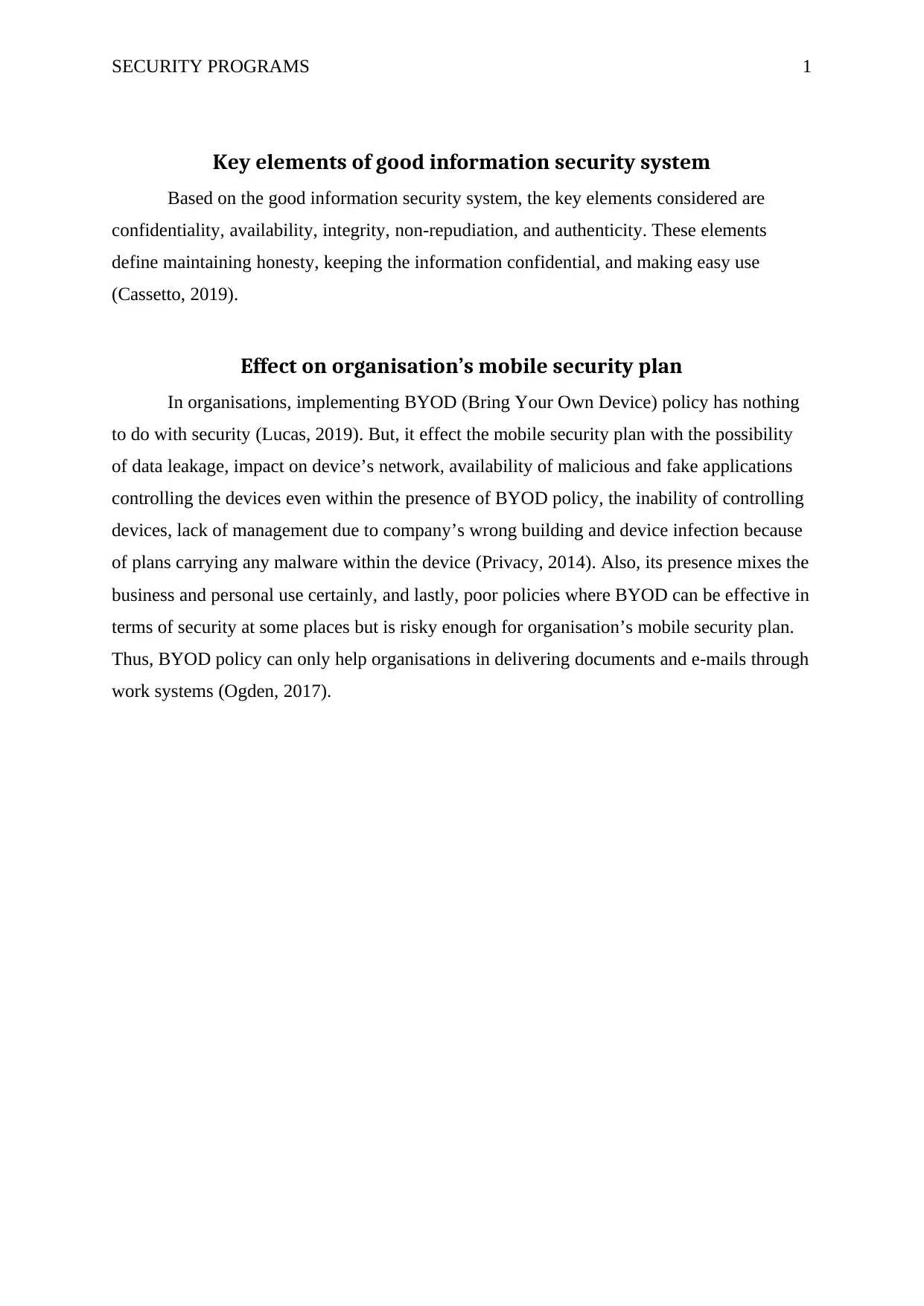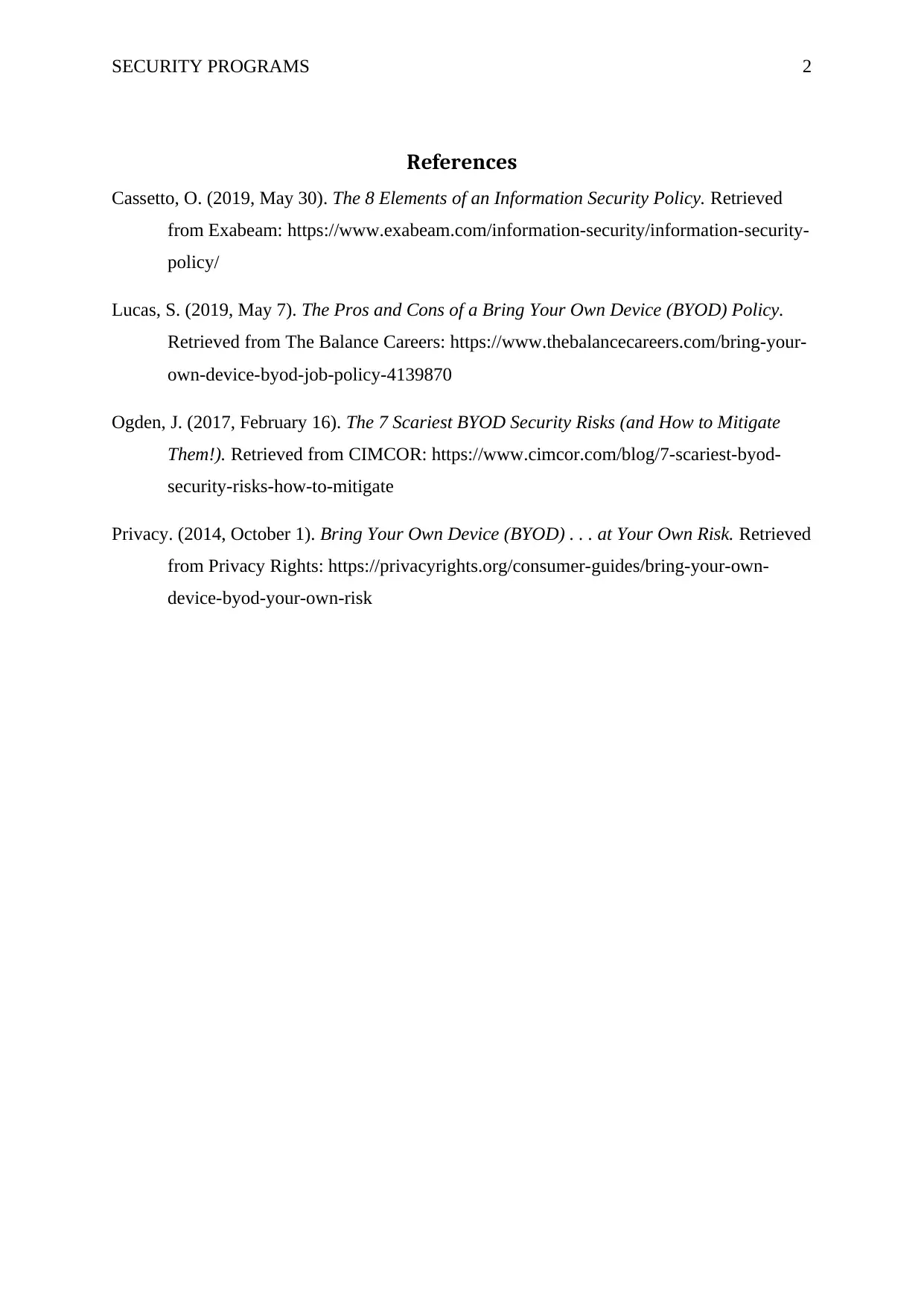Security Programs: Elements, BYOD Impact, and Risk Assessment
VerifiedAdded on 2022/09/05
|3
|362
|20
Report
AI Summary
This report examines the key elements of security programs, focusing on confidentiality, availability, integrity, non-repudiation, and authenticity. It then analyzes the impact of Bring Your Own Device (BYOD) policies on organizational mobile security plans. The report highlights potential risks associated with BYOD, such as data leakage, device and network impact, malicious applications, and difficulties in device management. It suggests that BYOD policies primarily facilitate document and email delivery, and can be risky for organizations. The report references several sources, including Exabeam, The Balance Careers, CIMCOR, and Privacy Rights, to support its findings and provide a comprehensive overview of the topic.
1 out of 3










![[object Object]](/_next/static/media/star-bottom.7253800d.svg)